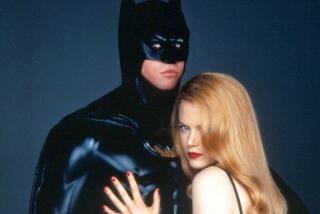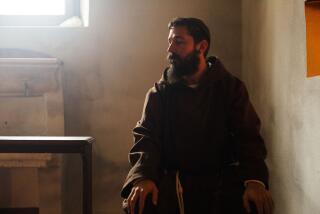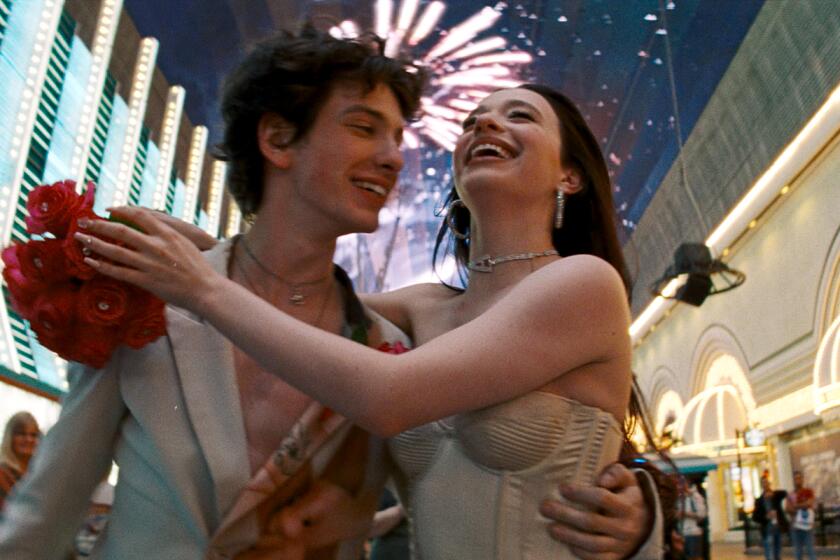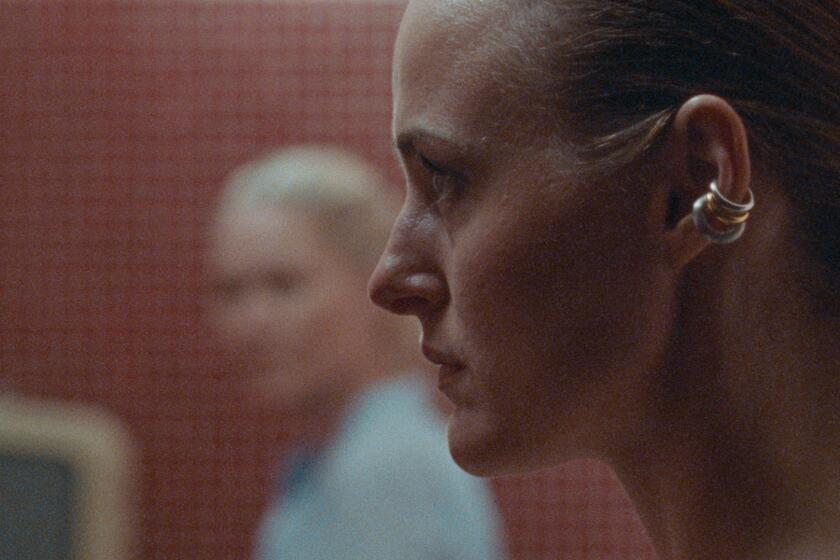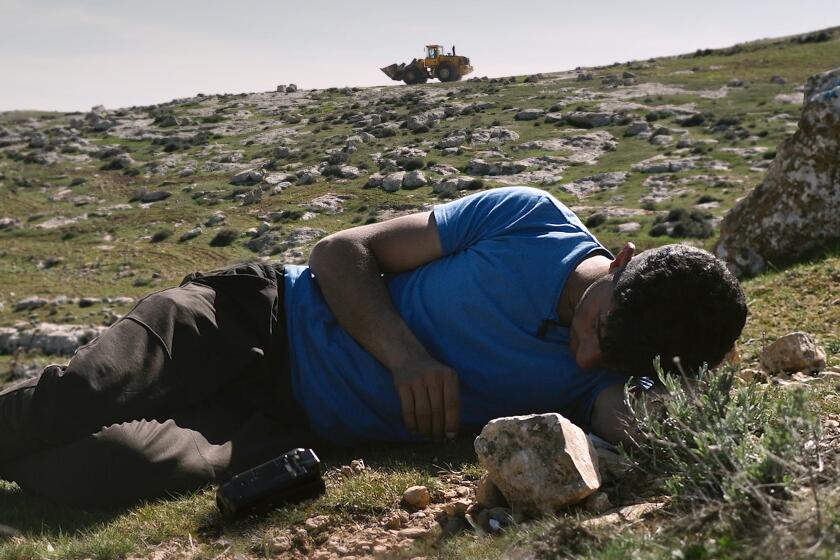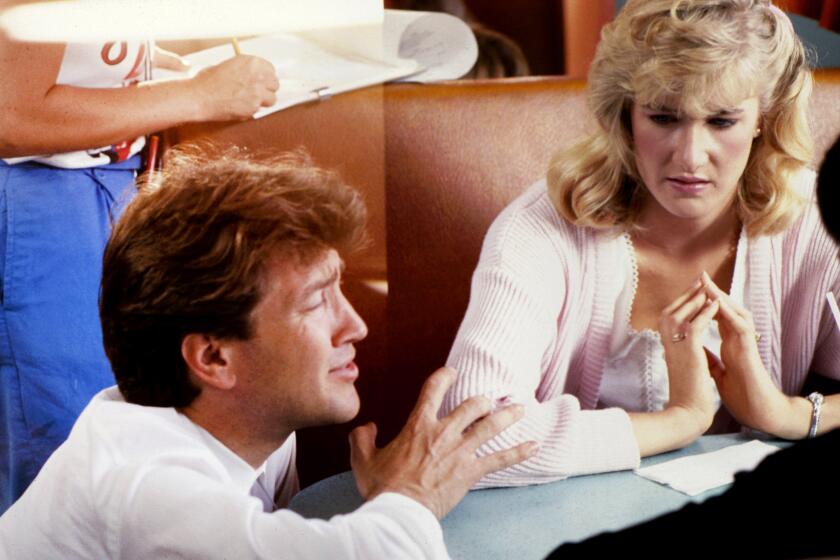Restoring ‘Big Red One’: a fuller Fuller
- Share via
In Sodankyla, Finland, 100 miles north of the Arctic Circle, there’s a street named after him. He’s the director Martin Scorsese says influenced him the most. He so inspired the filmmakers of the French New Wave that Jean-Luc Godard cast him as an iconic American director in “Pierrot le Fou,” the man who famously says, “Film is like a battleground. Love. Hate. Action. Violence. In one word, emotion.”
“Believe me,” Sam Fuller later grumbled, “I’d be rich if I had a nickel for every film magazine and festival program around the world who printed that ... line.”
Brash, colorful, strong-minded, the kind of guy who could look you in the eye and seriously insist, “I worked for giants in this ... town, giants,” Fuller (who died in 1997 at age 85) was a legend both before and after his death.
Intensely cinematic low-budget films like “Pickup on South Street,” “Shock Corridor,” “Merrill’s Marauders” and “Forty Guns” led the Midnight Sun Film Festival to name that arctic street in Finland after him and caused critic Andrew Sarris to call him “an authentic American primitive whose works have to be seen to be understood.”
“Sam was a marvelous character, I never met anyone who didn’t adore him,” says critic and filmmaker Richard Schickel, who made a documentary about Fuller a few years back. “He was undaunted and feisty; nothing was going to stop him from whatever he was going to do.”
The project that was closest to Fuller’s heart because it was based on his own World War II years was “The Big Red One.” The film filtered his own experience of combat through the lives of four soldiers and their sergeant (Mark Hamill, Robert Carradine, Bobby Di Cicco, Kelly Ward and Lee Marvin) serving in the U.S. Army’s 1st Infantry Division as it invaded North Africa, Sicily and finally France. It’s a film Fuller talked about for decades before he shot it, a film that only now, 24 years after it was made, is going to have its world premiere Friday at the Cannes Film Festival in a version close to the one he envisioned.
This is technically “The Big Red One’s” second time at Cannes. The original Lorimar release version of 1 hour, 53 minutes was in competition here in 1980, and though Fuller was publicly supportive (“a hell of a job, I love it, I love it”), his real feelings, as revealed in “A Third Face,” an autobiography released after his death, were quite different.
Here he talked longingly of the “four and a half-hour version of the movie” he’d turned in and how he was “obviously burnt up by the way they’d cut it down.” “The studio took it away from him at some point, and he accepted that,” Schickel says, explaining the difference in reaction. “It wasn’t the version he wanted, but it was a version. Still, it was a huge disappointment, and he kept talking about his hopes that someone would recover the cut footage. And at least for the last decade, people have been trying.”
The missing version of “The Big Red One” has been one of cinema’s elusive holy grails, like Orson Welles’ cut of “The Magnificent Ambersons.” Now Schickel and Warner Bros. (which acquired Lorimar) have assembled what is being billed as “a reconstruction” (“It’s not a director’s cut, he didn’t live to make it,” Schickel explains) just in time to debut in France for the 60th anniversary of the D-Day invasion.
The new “Big Red One” has added 15 entirely new sequences and enhanced an additional 23, adding nearly 50 minutes to the film. While this does not add up to the legendary 4 1/2-hour version Fuller rhapsodized about, Schickel now believes for several reasons that that cut was more a myth than an actual piece of cinema.
“We have Sam’s shooting script, he carried it with him every day -- that was our guide,” Schickel explains. “I can account for everything in the script, and with only two exceptions, we have representations, at least a little bit, of every scene in the script. When you add that Sam shot very lean -- he didn’t do a lot of coverage, he was no Willie Wyler, there were no 40 takes of everything -- I think Sam’s cut was closer to three hours and change. I really believe every significant thing he shot is here. This is the feasible cut, as full and fair a representation of this film as it’s possible to make.”
Even at a shorter running time than everyone fantasized about, this new “Big Red One” has gotten major movie world players excited. The New York Film Festival has expressed serious interest, a cover story in Film Comment is in the works, and numerous festivals worldwide are already eager to show it in advance of a DVD scheduled for release around the anniversary of V-E Day in 2005.
To see the full “Big Red One” after having seen the shorter version is to understand what a major difference 50 minutes can make. The new cut restores long sequences such as a battle in an amphitheater between a German tank and French horse soldiers as well as brief moments like infantrymen putting condoms on their rifles to waterproof them during amphibian landings.
Just as critical, the film so beefs up the Normandy invasion sequence that Schickel calls it the most realistic D-Day until “Saving Private Ryan,” restores a Fuller cameo as a newsreel director and adds to the screen time of star Lee Marvin, who gives one of his most iconic performances as the laconic, nameless Sergeant.
Overall, the new footage turns “Big Red One” into an intimate personal epic, giving it a richness of incident and character that it simply did not have the first time around. We can see now why Fuller cared so much about this project and why it is appropriate to consider it the triumph of his mature years.
“We made it a Sam movie,” Schickel explains, citing two major sets of additions. “We really restored as a major presence the character of Schroeder (Siegfried Rauch), the German who stalks them for the entire movie. And we restored the children. ‘You’ll see that in all my war pictures, children everywhere,’ Sam said, ‘because that’s all I ever saw.’ ”
The new version also underlines Fuller’s thoughts on war as it was experienced by the ordinary soldier. “It’s this odd combination of absurdity, terror and boredom,” Schickel says. “Sam always said the real glory of war is surviving.”
Schickel and Brian Jamieson, international vice president of Warner Home Video, got the idea to try to reconstruct the film while they were thrown together traveling to festivals with Schickel’s Oscar-nominated documentary on Charlie Chaplin. “Calls had been coming in over the years, ‘What’s Warner Bros. doing with “Big Red One.” ’ There is a cult following for this film,” Jamieson reports. “And the popularity of DVDs has opened the door to the possibility of a lot more restoration work.”
“He is as a god for these people,” Schickel says of the cineaste passion for Fuller, especially in Europe. “He was kind of a rebel American figure, outside the established order, making good films on a shoestring. And this guy had a unique vision. He was a tabloid absurdist, with a real taste for the outre and the sentimental.”
Though the Warners database had always said that footage for “The Big Red One” existed in the studio vault in Kansas City, what was actually there was another question. “We asked for it, but it all came in slowly,” Schickel reports. “First a new sequence would arrive, but only in master shot, then came the cutaway. It was all very suspenseful, we were often going on just a smile and a shoeshine.”
Ultimately, 70,000 feet of negative, the equivalent of four to five hours of screen time, was recovered, and, following Fuller’s script and working with his own editor and longtime collaborator, Bryan McKenzie, Schickel, who’s made some 30 documentaries, put the 2-hour, 43-minute version together.
“Of all the things I’ve done on film,” he says, “in some ways this is the most satisfying. It’s the real deal. It’s the movie.”
More to Read
Only good movies
Get the Indie Focus newsletter, Mark Olsen's weekly guide to the world of cinema.
You may occasionally receive promotional content from the Los Angeles Times.
